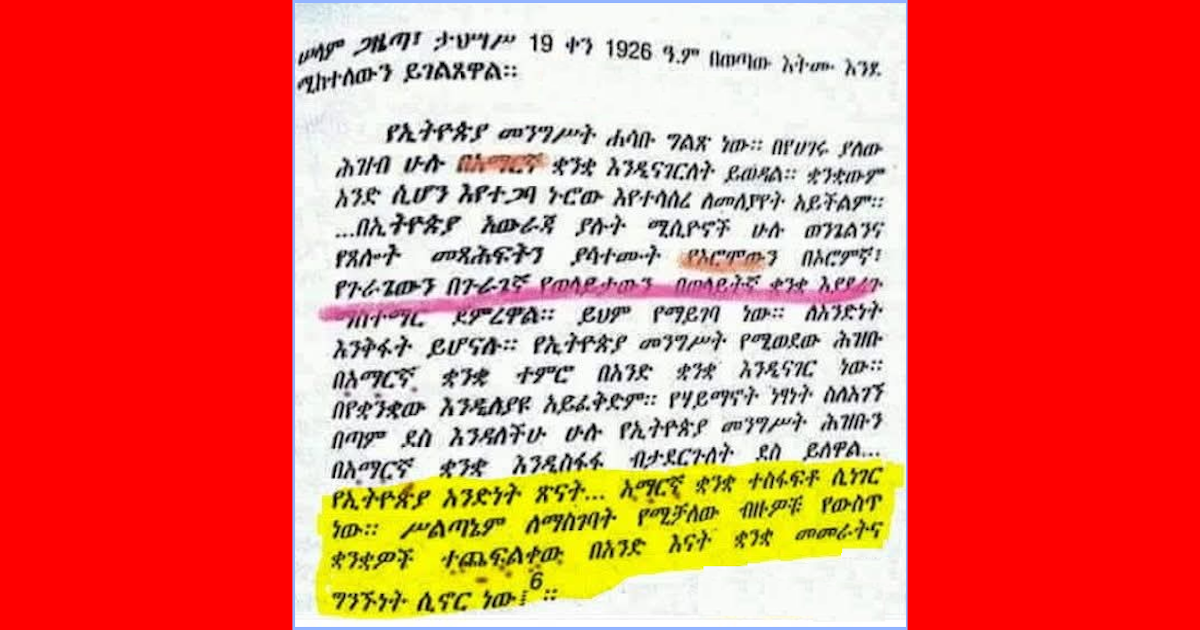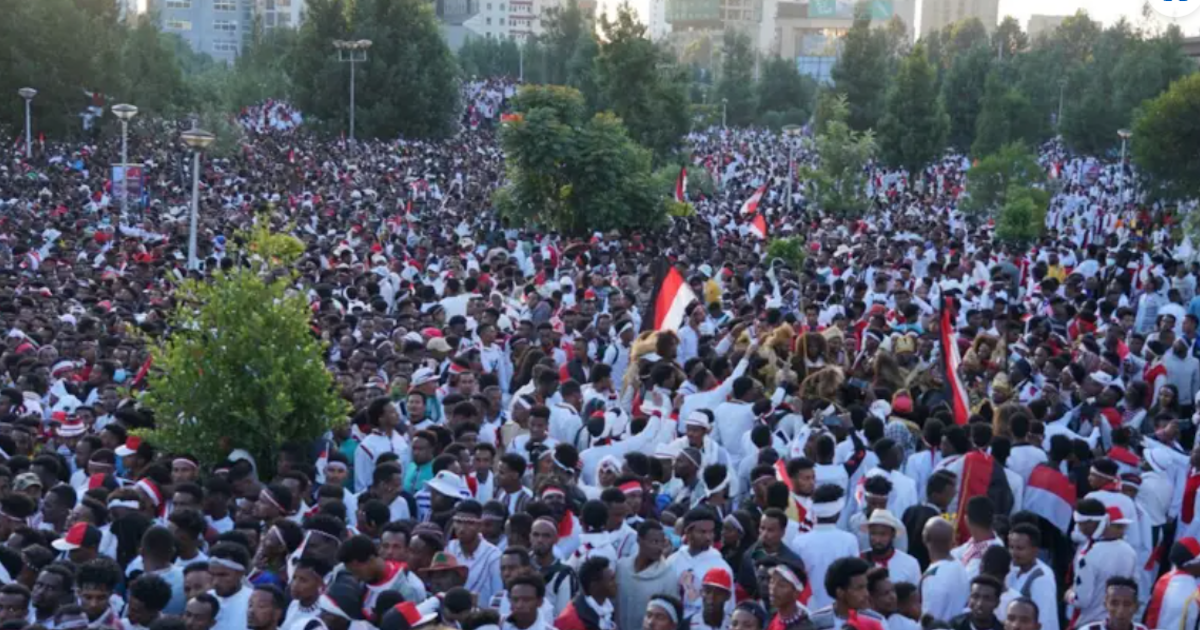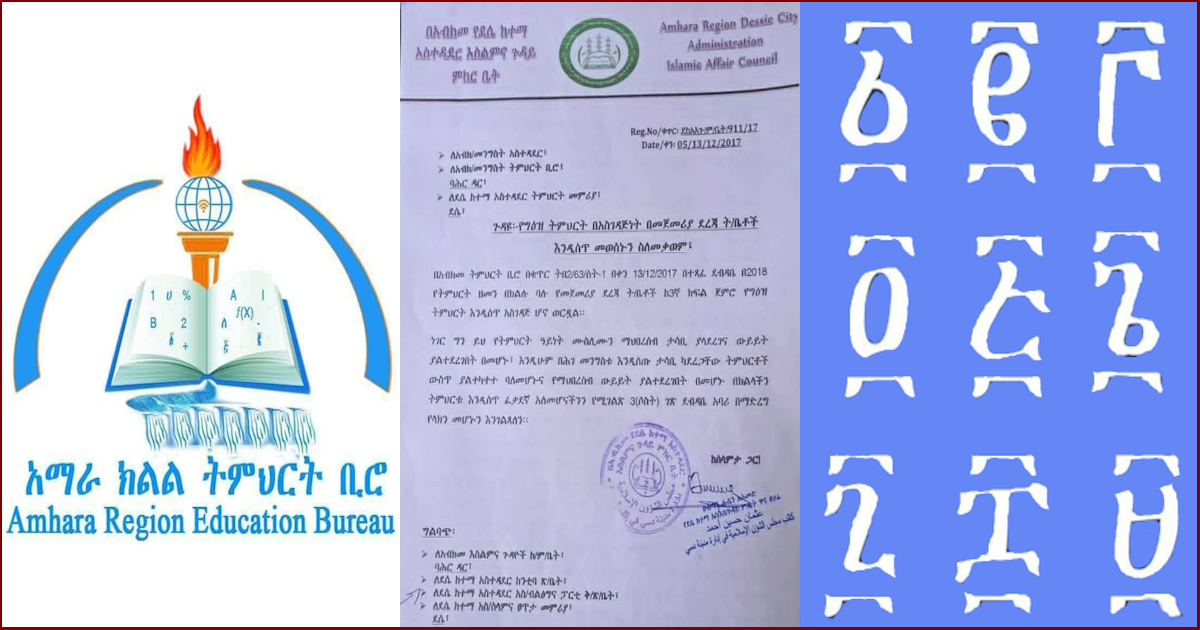How a False Unity of Mythical Ethiopia Was Manufactured Through Annexation and Assimilation

Introduction
Emperor Haile Selassie ascended to the throne on April 2, 1930. Just over a year later, on July 16, 1931, he promulgated the country’s first modern Constitution. In that founding document, the name “Ethiopia” was formally constitutionalized for the first time—replacing the historical name “Abyssinia.” This name change, however, did not gain international recognition until 1945, with the formation of the United Nations in the aftermath of World War II.
The term Ethiopia—of Greek origin and biblical mention (from original word Aithiopia or Αἰθιοπία in Greek)—did not originally denote a specific country but referred more broadly to people of darker complexion living south of Egypt. Its appropriation as a state name was a calculated political maneuver: a strategic rebranding designed to obscure the imperial annexation of southern territories into Abyssinia, and to manufacture a narrative of ancient continuity that never existed.
This foundational myth sparked the enduring inferno of division that continues to ravage the Ethiopian empire state to this day. It created two diametrically opposed narratives: on one side, those fighting to break the yoke of annexation and reclaim suppressed identities; on the other, those fervently clinging to a mythical Ethiopia—an imagined 3,000-year-old empire fabricated by the fusion of Abyssinia and forcibly annexed territories and peoples.
The deliberate repackaging of Ethiopia as a timeless civilization was not a misinterpretation—it was a deliberate myth-making project. This framing is further explored in a previous article: The Myth of Ethiopia’s Historical Continuity: A Political Invention Disguised as Legacy.
The Blueprint for an Assimilation of the Empire State
Fast forward 33 months into his reign: on January 11, 1933, Emperor Haile Selassie, through his official mouthpiece Selam Newspaper, issued what effectively amounted to an imperial decree for a monolingual, monocultural assimilation (see image of Amharic text below).

The following is as close literal English translation of that public statement:
Ethiopian government’s thoughts are clear. The Government would love all people of each country to speak in Amharic on their [government’s] behalf. When the language becomes one, their lives will be intertwined by [inter]marriage and become inseparable. All the missionaries in Ethiopian districts started teaching by publishing the Gospel and prayer books, for the Oromo in Oromigna [Oromo language], for the Gurage in Guragigna [Gurage language], for the Wolayita in Wolaytigna [Wolayita language]. This is unacceptable. These will be obstacles to unity. What the Ethiopian Government loves is for the peoples to learn in Amharic and speak in one language. They [the Government] won’t allow the differing in languages. As they [peoples] are happy with the freedom of religion, so would the Government be happy if the Amharic language expands widely. The enduring unity of Ethiopia is when Amharic is widely spoken. Importing civilization is possible only when the many internal languages are crushed [into one], and leadership and communication with one mother language persists.
This bluntly assimilationist vision was later reinforced—more harshly—by Emperor’s then-Minister of Education, Ato Tsedalu Sahle, who stated:
“…ሌላው ማናቸውም የአረማውያን ቋንቋ ሁሉ እንዲደመሰስ ማድረግ ያስፈልጋል…”
Rough translation: “It is necessary for all other languages to be erased.”
Imperial Strategy in Plain Sight: What These Statements Reveal
These declarations are unambiguously assimilationist, laying bare the imperial regime’s intent to eliminate linguistic diversity in favor of Amharic.
The regime openly acknowledged that language homogenization was a strategic tool of state control and identity engineering.
The metaphor of “crushing” languages to “import civilization” reveals a chilling colonial logic—from within—not from a foreign occupier but from a self-imposed internal hierarchy.
A Modern Conflict Rooted in Recent History
What is often portrayed as an ancient cultural rift is, for the most part, a modern construct—a 20th-century design forged through the consolidation of Annexation under Menelik and Assimilation under Haile Selassie, a project barely 95 years in the making.
The political fault lines that destabilize Ethiopia today can be traced directly to:
- Annexation, veiled in the myth of a 3,000-year-old empire, for most part by Menelik from late 19th century; and
- Assimilation, masked as modernization through monolingualism by Haile Selassie.
These were not organic developments. They were engineered outcomes of state policy.
Correcting the Historical Injustices
The path forward is neither mysterious nor complicated.
The wrongs of annexation can be addressed with political instruments such as federalism, confederalism, and even independence restoring a sense of self-rule to historically annexed regions.
The wounds of assimilation can be healed through full and unreserved language rights, enabling communities to teach, govern, and express themselves in their native tongues.
The real obstacle is not complexity. It is the absence of political will, rooted in delusion—the same delusion that clings to a mythical unity forged in coercion rather than consent.
True national unity can never be born out of a forced unitary system or through enforced cultural conformity. It can only emerge from voluntary cohesion, nurtured by mutual respect.
The absence of a genuine solution ensures a perpetual, yet avoidable, conflict—especially when its root causes are well understood, as outlined above. Consider this: the vast resources squandered on internal warfare could instead be redirected toward a national mission—one that tackles poverty, inequality, and underdevelopment, the true threats to the empire’s survival.
Conclusion
Emperor Menelik initiated the imperial expansion by annexing territories south of Abyssinia, aided by European firearms and campaigns of brutal repression that forced submission through massacres.
Emperor Haile Selassie then advanced the project of empire-building by:
- In 1931, rebranding Abyssinia as “Ethiopia” to fabricate the illusion of historical continuity.
- In 1933, issuing a clear vision of a monocultural, monolingual empire, bent on crushing indigenous identities in the name of unity and civilization.
These are not abstract interpretations—they are direct statements by imperial leaders. They form a factual foundation too glaring to ignore.
How can we not see these facts for what they are?
Why do those in positions of political power within this empire remain so complacent, when the problems are glaring and the solutions are so plainly within reach?
And why drain the nations’ and nationalities’ lifeblood in endless internal wars—costing trillions of Birr—when what Ethiopia truly needs is solving the political quagmire and for the trillions to be invested in rescuing the vulnerable today and building a foundation for tomorrow’s prosperity?
Never mind the average citizen—even the most hardened extremists cannot look away from such glaring historical truths.





